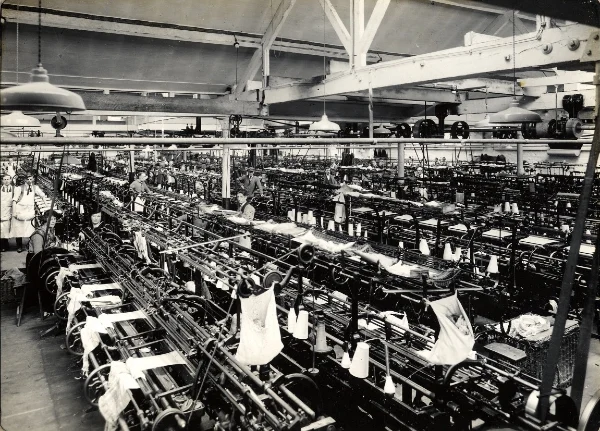
WORK Records
WORK Records is an 18 month creative heritage project exploring historic working lives across the East Midlands.
It brings together “investigative” teams of heritage curators, historians, artists, current and former workers and volunteers, to explore the holdings of three heritage collections – Derbyshire Record Office, Corby Heritage Centre and John Smedley Archive – and discover what they can tell us about working lives at three family firms: John Smedley at Lea Mills, packaging firm Robinson and Sons in Chesterfield, and steel manufacturer Stewarts & Lloyds Ltd in Corby.
The artists will make short films will literally animate these important, untold stories of the significance, ideas, realities, and contemporary resonance of regional family firms, bringing heritage stories to life in an accessible and engaging way.
The films will be the catalyst for live and online events, from June 2026, connecting contemporary workers and families with their historic counterparts. An online resource will document the project and host discoveries, increasing access to the collections, demonstrating the importance of heritage and how it resonates with how we live today.
Alongside the archive collections, Animate is working with arts organisations Junction Arts in Chesterfield and Fermynwoods Contemporary Art in Northamptonshire, the history team at the University of Derby, and Derwent Valley Mills World Heritage Site.
The artists are Kate Anderson, Kim Noce, and Saul Pankhurst. You can find more about them below. Stefan Ramsden, WORK Records Project Historian, will be guiding the teams and the artists. Vicky Washington is WORK Projects Project Manager, and Amanda King is working with us to evaluate the project.
WORK Records is made possible with support from The National Lottery Heritage Fund, thanks to National Lottery players, and is also supported by Arts Council England.
If you might be interested in contributing to WORK Records eg if you work or used to work at one of the companies, or a volunteer researcher, please email Gary at workrecords@animateprojects.org and we’ll add you to our mailing list.
WORK Records – exploring historic working lives – follows on from our project WORK – four artists’ films exploring contemporary working lives in the middle of England. Made in Derby, Thrapston, Birmingham and Bolsover, by artists Dryden Goodwin, Jenny Holt, Esther Johnson, and Adam Lewis Jacob. Follow this link to the WORK website to see the films and find out more.
Photograph: workers at the John Smedley knitting factory in Lea Bridge, Derbyshire, 1927, courtesy John Smedley Archive Charitable Trust
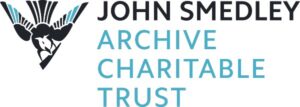
About The National Lottery Heritage Fund
The National Lottery Heritage Fund is the largest funder for the UK’s heritage. Using money raised by National Lottery players we support projects that connect people and communities to heritage. Our vision is for heritage to be valued, cared for and sustained for everyone, now and in the future. From historic buildings, our industrial legacy and the natural environment, to collections, traditions, stories and more. Heritage can be anything from the past that people value and want to pass on to future generations. We believe in the power of heritage to ignite the imagination, offer joy and inspiration, and to build pride in place and connection to the past.
Kate Anderson
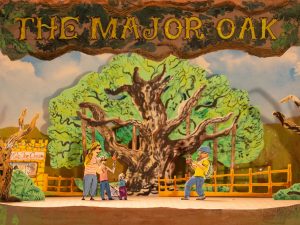
Kate is an animator and illustrator, producing animated shorts, music videos and commercials for a broad range of clients, as well as making personal work. Commissions have included: At the Kitchen Table, animating migrant food stories for the Migration Museum; animated portraits of Jack White and The Edge for a guitar documentary ; and a video for Liz Green’s Displacement Song, winner of Best Music Video at the British Animation Awards. Her ongoing project Meeting Trees has taken her around Britain, drawing heritage trees, and highlighting their stories. Kate studied animation at Edinburgh College of Art and has an MA Animation from the Royal College of Art.
https://www.kateanderson.co.uk/
Kim Noce
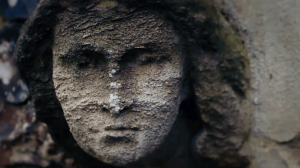
Kim is an Italian/Irish multimodal and mix-media artist. Her work has been screened in many major international film festivals, including Venice, Berlinale, Cannes, Annecy, Encounters, Aesthetica, London Film Festival, and Edinburgh Film Festival, and broadcast on CH4, BCC, MTV, ITV and MUBI, reaching two million views. Her work has been exhibited at the ICA London, Tate, Barbican, Biennale of Odisha, London Design Festival, and many other venues worldwide. Kim studied Fine Art at the Accademia di Brera in Milan, and has an MA in Animation from the National Film and Television School. at the NFTS. Kim is Course Lead for MA Animation at London College of Communication, University of the Arts, London, and also teaches at the National Film and Television School.
https://kimnoce.wordpress.com/
Saul Pankhurst
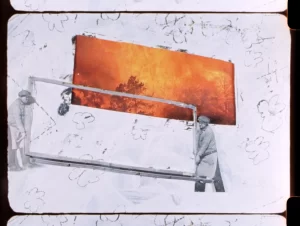
Saul is an artist and filmmaker working across documentary, animation, and collage. He was selected as a New Contemporaries artist in 2024 and has worked with clients including Channel 4, Positive East, United Response, and Cancer Research UK. His films have been screened and exhibited at the ICA, Ann Arbor, Alchemy Film and Arts, London International Animation Festival, Raindance and Glasgow Short Film Festival.
Saul studied Film and Television at Edinburgh College of Art. He has a Diploma in Analogue Cinematography from FAMU film school in the Czech Republic. He took part in Film London’s Artists’ Moving Image Network Fellowship programme in 2024.
WORK Records partners
Corby Heritage Centre
Housed in a former school building, Corby Heritage Centre has an eclectic collection of photographs, documents and other artefacts, focused on celebrating the industrial and social heritage of the town, its steel industry and communities, including the Scottish migrants who came to work in the steelworks. Our starting point of this investigation will be the staff newspaper for steel manufacturer Stewarts & Lloyds, and films made by the S&L film unit.
Derbyshire Record Office
The Robinson’s collection at Derbyshire Record Office has extensive records from the Chesterfield packaging firm that produced pill boxes in the 1840s and invented the spiral (Smarties) tube in the 1930s. Records relate to its pioneering paternalism – worker satisfaction, housing (in 1919 the company created Wheatbridge Housing Association forms to build houses for employees) and protection (first aid, leisure, exercise, hot meals, entertainment, sickness pay, sanitary pads). The company magazine, The Link (1918-96) will be a key source for the investigation.
John Smedley Archive Charitable Trust
The John Smedley Archive collection, of over 23,000 items (going back to the second half of the 19th century), including paintings, promotional materials, production specifications and historic garments, is the most comprehensive of any of the hosiery and knitwear companies. It offers a unique glimpse into over 240 years of this family business.
Fermynwoods Contemporary Art
Founded in 1998, Fermynwoods Contemporary Art supports life through art. This is achieved through commissioning innovative and meaningful ways for artists to engage with audiences in public spaces across Northamptonshire and online, through a wide range of temporary, socially engaged and education-based projects, linking culture to environmental sustainability and education, fusing urban culture with the rural landscape and bringing rural perspectives into the urban environment.
Junction Arts
Established in 1976 and based in Chesterfield, Junction Arts helps communities facing social barriers such as poverty, poor health, and low aspirations to create a better future through the arts. Festivals, workshops, and events give people the opportunity to be creative, learn new skills and build stronger communities. Junction Arts is committed to working with communities to co-create magical and memorable arts experiences that empower people, improve wellbeing and inspire change.
University of Derby
At the University of Derby a thriving community of researchers, professionals and practitioners are influencing the creation of new knowledge and sharing their expertise. On the MA in History and Heritage, students explore how history plays a central role in understanding and shaping contemporary society, preparing them for leadership roles in public history, heritage and cultural industries.
Derwent Valley Mills World Heritage Site
The Derwent Valley Mills and the surrounding landscape were inscribed as a World Heritage Site by UNESCO in 2001, in recognition that the valley saw the birth of the factory system, when new types of building were erected to house new technology for spinning cotton. DVMWHS promotes a local, national and international understanding and identity for the Derwent Valley Mills World Heritage Site as a cohesive and coherent whole, based on its global significance for all of humankind.

